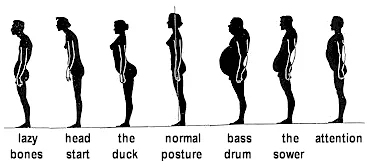I did some work with an acupuncturist and they recommended that I try an anti-inflammatory diet. I’ve been tying this out for the last two months and it really does work. I've learned that my big triggers for inflammation are refined sugar, dairy, fried foods, and processed foods. I was very strict with my diet for a month and then I took a cheat weekend. That whole weekend, my ankle was extremely sore, the same feeling I had before I limited my diet.
What is the anti-inflammatory diet and why is is helpful? Inflammation is usually our body’s response to stress; chronic stress and inflammation can lead to a host of health problems including heart disease and cancer. Certain foods cause our bodies to react in a pro-inflammatory way. Other foods promote our body’s natural anti-inflammatory responses. This diet is not promoted for weight loss; rather, it’s a great way to give your body the nutrition it needs to maintain optimum health. There are many interpretations of this diet, but the guidelines below are what I follow.
Pro-inflammatory foods to avoid
- Cow dairy (butter, cheese, milk, etc)
- Refined and added sugar (sugar takes a lot of form, most of them are processed and very bad for our bodies)
- Nightshade family (eggplant, tomato, peppers, white potato)
- Extremely oily or fried foods
- Processed foods
- White or refined flour
- Gluten (for some people, I personally can eat gluten)
- Caffeine (I still drink coffee, but I’ve been limiting my my daily intake…)
- Alcohol (Again, I still drink this, but in much smaller quantities and much less often)
- High fat meals
- Saturated fats (vegetable oil, canola oil, any hydrogenated oil)
Anti-inflammatory foods
- Lots of fruits and vegetables
- Fiber rich complex carbohydrates (such as sprouted breads, brown rice, and quinoa)
- Raw nuts
- Sweeteners in limited amounts (maple syrup, raw honey, agave, stevia)
- Lean protein (chicken, turkey, organic tofu, wild fish, limited amounts of red meat)
- Beans
- Spices (ginger, turmeric, cinnamon)
- Extra-virgin olive oil, coconut oil
Turmeric is a great anti-inflammatory spice. An easy and tasty way to eat more turmeric is make a simple turmeric tea. My favorite recipe for this is on 101 Cookbooks.
No sugar added, 100% pure tart cherry juice also has amazing anti-inflammatory properties. I drink one small cup of this a day.
When I’m at home, I drink warm lemon water each morning. When I wake up, the first thing I do is fresh squeeze a lemon into a glass and add about 8 ounces of warm water. It perks me up (which helps me drink less coffee) and the boost of extra vitamin C pumps up my immune system. Lemon water can also help decrease inflammation by reducing the amount of uric acid in our joints. It also has the added benefit of acting as a mini cleanse by helping the liver increase enzymes.
In addition to a better diet, a few basic supplements can really help our bodies build muscle, burn fat, and feel good. We want to make sure that we are eating as much cleanly sourced and organic foods at possible. Better sources will have vitamins and nutrients that are more readily available for absorption into the body. You really are what you eat!
Our body craves omega 3s. These have been linked to lower risk of heart disease, depression, Alzheimer’s disease and benefit our brain function and joint movement. Unless you eat a lot of oily fish (such as salmon), flax seeds, and walnuts, it’s a good idea to take a fish oil supplement, which is chock full of wonderful omega 3s. Make sure that you get one from a wild and cold pressed source for maximum nutritional value.
Coconut oil is a really great fat that is beneficial in your daily diet. It contains a large amount of medium chain triglycerides (MCTs), which is a good-for-you fatty acid. It’s easily absorbed in the digestive tract and provides a quick and clean energy source. Coconut oil also has a healthy amount of lauric acid; studies have shown this helps protect our guts by killing pathogenic bacteria. The calories it burn cleanly in your body and are non insulin spiking. It can be used for cooking or added to any other food. I eat this by the spoonful, stir it in oatmeal, spread it on bread, and add it to my meals. The best coconut oil is whole kernel, unrefined, virgin, organic, and non-hydrogenated.
Get a good multivitamin from an organic and naturally derived source. It’s amazing how many essential nutrients we don’t get if our diets are not perfectly balanced. I also take calcium citrate with vitamin D. The vitamin D help your body absorb calcium, burn fat, and promotes good mental health.
Protein is really important for our body to build muscle and repair itself. Make sure to eat a lot of lean protein from organic, free-range, wild caught (for seafood) sources. Protein powder or shakes can be a great supplement, but be careful that you choose one that is not laced full of sugar. My favorite sugar free, gluten free, vegan protein shake is the Sun Warrior brand.






